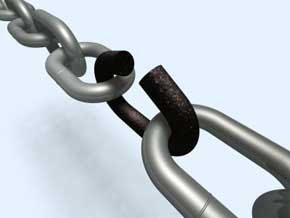by Robert B. Kaiser and Robert E. Kaplan
Like any successful movement, the strengths movement drove a single issue and inevitably left out a lot. Although several important things got overlooked, we want to call attention to a very real danger: Strengths can become weaknesses when overused.
We’ve seen virtually every strength taken too far: confidence to the point of hubris, and humility to the point of diminishing oneself. We’ve seen vision drift into aimless dreaming, and focus narrow down to tunnel vision. Show us a strength and we’ll give you an example where its overuse has compromised performance and probably even derailed a career.
We’ve studied the extent of the problem with an innovative assessment tool, the Leadership Versatility Index. The tool uses the 360 method of gathering ratings from bosses, peers, and subordinates, but instead of the typical five-point rating scale that assumes “more is better” it has a unique scale that ranges from “too little” to “the right amount” to “too much.” Coworkers can therefore indicate if a manager overdoes it on four dimensions of behavior: forceful, enabling, strategic, and operational. Most executives are rated “too much” on at least one of these dimensions [PDF].
Further, the more pronounced your natural talent and the stronger your strengths, the graver the risk of taking them to counterproductive extremes. In one study, we compared coworker ratings on the Leadership Versatility Index to leaders’ strengths as identified by the Clifton StrengthsFinder, a questionnaire that managers fill out themselves to identify their natural talent. There was a clear correlation between having talent in certain areas and overdoing behaviors associated with those talents. For instance, leaders whose StrengthsFinder results indicated such talents as “Achiever,” “Activator,” or “Command” were more often rated as doing “too much” forceful leadership. Similarly, those who had the talents “Developer,” “Harmony,” or “Includer” were more often rated as doing “too much” enabling leadership. Overall, leaders were five times more likely to overdo behaviors related to their areas of natural talent than areas in which they were less gifted.
Taking these strengths too far has consequences. Across thousands of managers ranging from middle management to CEOs and spanning the US, Latin America, Europe, and Asia, we find a curvilinear relationship between leader behavior and employee engagement, team productivity, and effectiveness. In every case, these outcomes are lower for managers rated “too little” on the leader behaviors, peak for those rated “the right amount,” and drop back down for those rated “too much.” Overdoing it is just as ineffective as underdoing it.
One of the more counterintuitive things we have discovered is that not only do many leaders not know what their strengths are, but they also downplay and deflect feedback about their strengths. It takes extra effort to get the strengths to sink in, but doing so is prerequisite to fine-tuning how you use them. Fine-tuning is an art that requires an exquisite blend of both self-awareness and situational awareness.
Be aware of yourself. To handle the challenges that come your way, you must be able to read and respond adeptly. This requires knowing your default tendencies — for instance if you are more achievement-oriented and commanding, then you may be biased to respond too forcefully. Self-awareness allows you to respond mindfully to the needs before you, rather than out of habit. As one executive exclaimed upon making the connection, “I don’t have to give up my fastball; I just don’t have to throw it all the time!”
Be aware of the situation. We find it helpful for leaders to think of adjusting their strengths like a volume control [PDF]. The trick is to get the setting just right for the situation — from soft music for a quiet, intimate exchange, to a louder and lively level for a dance party. Knowing how much passion to put in a speech, how seriously to stress a concern, how long to let a discussion go on, how deep to get into the details, how fast to drive a change initiative — all of this requires a deft touch, equal parts knowing your own strength and knowing your audience.
It is neglectful if not irresponsible to emphasize strengths without warning leaders that the stronger the strength, the greater the danger of taking it too far. Toning down overused strengths requires a different approach from the skill development needed to improve upon a weakness, where the challenge is adding to a repertoire with basic skill building. Getting a strength under control is about refining a skill you already have. It requires learning to be more selective about what situations call for that strength and calibrating how much is enough, versus too much.
